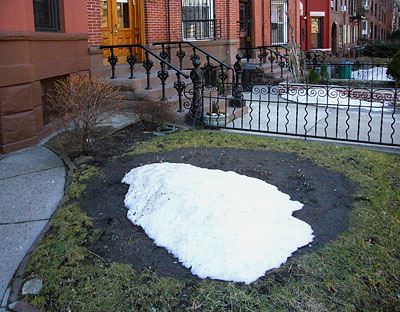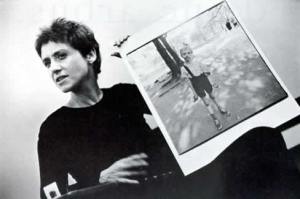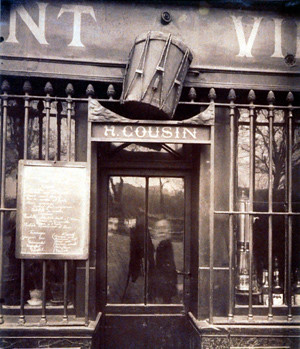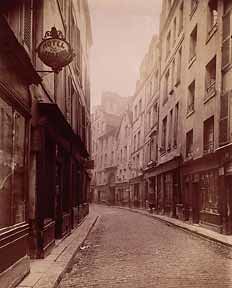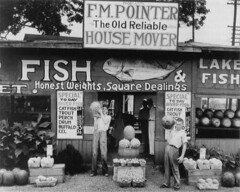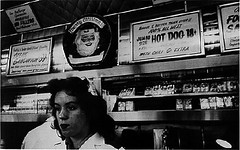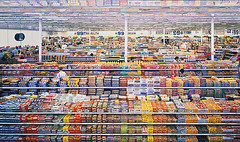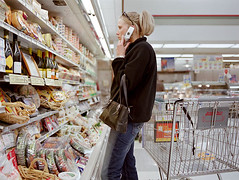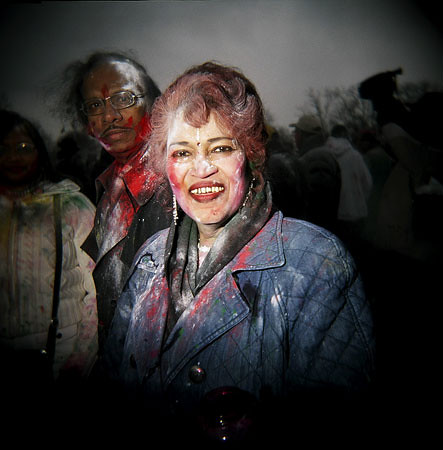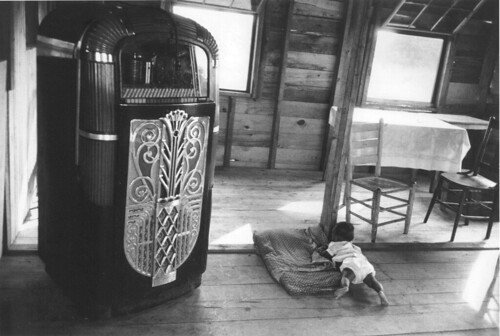This Sunday's unusually long, front-page
profile of photographer Jeff Wall by Artur Lubow in the
NY Times Magazine has sparked a firestorm of commentary (
here,
here,
here,
here,
here,
here,
here,
and here, for starters). With the cover teaser "Where Jeff Wall has taken the photograph" superimposed on the artist's silhouette against one of his massive images, the piece was clearly meant as a definitive statement; Wall is positioned as champion of an important historical stepping-off moment for the medium.
This tends to draw a line in the sand for photographers who can't find a way to connect to his pictures.
I've been hearing about Wall's importance for years and have looked at whatever pictures of his I could find online & in magazines. My reaction has always been puzzlement. THIS is what they're all talking so excitedly about? I knew a little about the theoretical ideas that inform his work &, after reading the article, I know more (the guy is a spellbinding talker). I decided to go to MOMA & see his work the way he means it to be seen.
Yes, the pictures are techinally impressive. If only for the notion of creating huge lightboxes for the wall, Wall deserves a lot of credit. But big & detailed as they are, the images are still bloodless & bland. In the article Wall says, "“Believing in the specialness of what you are photographing is a disaster. Then you think the photograph will be good because of what’s in it." So the boredom is deliberate, a way of signaling that we shouldn't be dazzled by subject matter or all the machinery of illusionism.
One of his preoccupations is connecting photography with the great Western tradition of figurative painting. For instance, his
"Picture for Women" references Edouard Manet's
"A Bar at the Folies-Bergere". In both images a woman stares into a mirror in which a large room is reflected and a man gazes at her. The wit of the picture is that in Wall's picture the woman looks commanding -- in the Manet she's deferential, if not defensive -- & the man, played by Wall himself, looks worried -- in the Manet he's predatory. And the Wall picture has something else: a large view camera placed in the center between man & woman. Instead of a sumptuous chandeliered Paris nightclub behind it, roaring with life, it's set in a generically austere photography studio lit by bare bulbs. Devoid of colorful bottles, flowers, fruit, tophats, jewelry, it's also deliberately empty of visual pleasure. OK, point taken, though I don't believe a viewer should be expected to conjure up a historical painting to enjoy it. And not a bad point either, as any photographer who has been dismayed by the way some viewers go instantly, it seems relentlessly, to the content of a picture, as though that was all it was or could be. But isn't there a way to make the point without some kind of monastic denial of the visual world?
Most of the work in Wall's show seems oh-so-seriously intent on making similar didactic points. When he creates "story" pictures -- an eviction in a neighborhood, say -- he's deliberately cheesy, campy, a B movie quality that says, This isn't real; it's a construct; I know it & now you know I know it. Or when he photographs the mundane corner of a garden & deliberately overexposes in harsh midday light, he seems to be saying, "You thought you were going to enjoy some sensuality, huh?"
I know photographs aren't real. I've know for a long time. Why does Wall have to keep insisting on it?
And why does he so often select the homeless, the drug addicted, the mentally ill, the socially marginalized to deconstruct? I understand that making obvious "semblances" (his word) of homeless men or American Indians may be a legitimate critique of "socially conscious" photography that too often is a kind of liberal trophy hunting. But how does this square with Wall's supposed "artistic and political radicalism"? With infinite subject matter available, why would a self-avowed politically correct artist want to signal to an audience that suffering isn't real?
Frankly, the guy is all over the place conceptually & in terms of execution. To be fair, I guess this indicates a willingness to try new approaches. Some of his later work corresponds to this somewhat surprising quote in the
Times piece: "I’m a more affectionate person than I thought I was. I like trees or I like people’s faces. That’s one reason I think my work has changed. I realized I wasn’t interested in filtering my affection for things through certain levels of mediation."
Several of the works -- an exterior of a nightclub with kids milling around & one lovely image of two women in a living room with a view of a harbor, for instance -- have some real human attraction. You actually want to know more about the people in the story (yes, I know they're not real). So...he seems to be moving in a promising direction (from my point of view).
I guess the real question is not, is Jeff Wall a good artist? He's certainly a good artist. The question is why is this method, the photograph as a record of fearsome theoretical ratiocination & obsessive compulsive process, showered with money & renown while photography that interacts directly with the real world is consistently pushed to the outer darkness?
